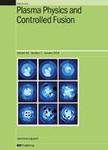版权所有:内蒙古大学图书馆 技术提供:维普资讯• 智图
内蒙古自治区呼和浩特市赛罕区大学西街235号 邮编: 010021
T=题名(书名、题名),A=作者(责任者),K=主题词,P=出版物名称,PU=出版社名称,O=机构(作者单位、学位授予单位、专利申请人),L=中图分类号,C=学科分类号,U=全部字段,Y=年(出版发行年、学位年度、标准发布年)
AND代表“并且”;OR代表“或者”;NOT代表“不包含”;(注意必须大写,运算符两边需空一格)
范例一:(K=图书馆学 OR K=情报学) AND A=范并思 AND Y=1982-2016
范例二:P=计算机应用与软件 AND (U=C++ OR U=Basic) NOT K=Visual AND Y=2011-2016


Dynamic mode decomposition (DMD) is a post-processing approach to decompose a complex time series into a set of modes via spectral analysis. DMD provides a new and powerful method to recover gyrokinetic drift-wave eigenfrequencies and eigenfunctions based only on the solution of the gyrokinetic-Maxwell initial value problem with almost no added cost to the initial value solver. In the present paper, DMD is applied to the CGYRO gyrokinetic code using a newly-developed CGYRO-DMD post-processor. CGYRO-DMD is numerically efficient, even on a single CPU. It does not set any restrictions on the plasma shape, beta (ratio of the plasma pressure to the magnetic field pressure), collisionality or number of species, and allows one to resolve numerous eigenmodes, even of comparable growth rates. In addition, DMD is not limited to unstable modes, but rather can capture stable and unstable branches simultaneously. In this work, we illustrate the accuracy of DMD through gyrokinetic analysis of mode transition for electromagnetic drift wave instabilities.



电话和邮箱必须正确填写,我们会与您联系确认。
版权所有:内蒙古大学图书馆 技术提供:维普资讯• 智图
内蒙古自治区呼和浩特市赛罕区大学西街235号 邮编: 010021

暂无评论